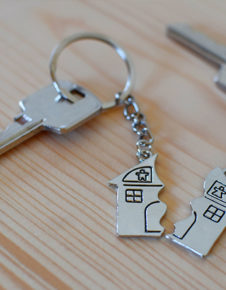Recently the BBC turned the spotlight on global Spanish retail giant, ZARA, and its claim against a relatively new Darlington-based fashion boutique, House of Zana, to drop its trading name after learning of House of Zana’s application for trademark protection over its name.
The story highlighted the impact litigation can have on small businesses and touches on a risk to which many businesses will be alive: the trade-off between action necessary to protect one’s brand – often the heart of a business’s value, against the risk of being seen, in the public eye, as bullying businesses that are of no real threat.
With a petition reportedly signed by some 71,000 people opposed to ZARA’s action, is ZARA really the metaphorical big bad wolf, or is this simply a necessary step taken to protect its brand? B P Collins LLP’s dispute resolution group offers its assessment of the situation as it currently stands.
Although each case turns on its own facts, in many cases, for commercial reasons action is often needed to protect a brand. The internet as an online-market place also affords businesses a ready platform to access customers faster and more broadly than ever before, and the risk of damage caused by confusion between brands is also, arguably, far greater.
ZARA’s point of view
This landscape has resulted in an increasing number of early warning shots ‘across the bow’ by brand-holders looking to protect their investment and head off potential issues. Whilst most disputes are resolved at an early stage without fanfare, often through agreements to co-exist, sometimes with one side agreeing to stay within one side of the market lines or even committing to a brand change, the financial and commercial risk over these disputes can be significant. Picking the battleground is therefore important.
ZARA’s initial response in April 2021, opposing the trademark application, reportedly complained of a risk that “…consumers will misread, mishear, mispronounce and/or otherwise perceive House of Zana as ZARA” and that it “…dilutes the distinctiveness and reputation of the ZARA brand”.
Once an application to register a trademark is submitted, an examination report is issued within four weeks after which the application is published in the trade marks journal for a short period. During that time third parties can make observations or oppose the application – as ZARA has done, under section 5, Trade Marks Act 1994.
Although we understand the decision is yet to follow, at a hearing of the application on 24 May 2022, ZARA reportedly argued that: “Zana” was problematically similar when compared to the ZARA brand, noting its wide reach and the substantial marketing cost in ensuring that reach was maintained; that confusion over the names was almost inevitable, with the words “House of” being merely descriptive or even implying a collaboration with ZARA; and that ZARA’s reputation could be at risk of House of Zana’s goods were of inferior quality.
House of Zana’s response
In opposition, House of Zana’s owner reportedly argued that the mere suggestion that the term ‘House of Zana’ might bring ZARA to mind for some people was not sufficient, and that one could not ignore the name as a whole, and that the differences outweighed the similarities such that there was no real likelihood of customer confusion.
The commercial issues are clear, but time will tell as to whether ZARA’s application holds water. In the meantime, if you have a question over protecting your brand or wish to discuss a claim, please contact us at enquiries@bpcollins.co.uk or call 01753 889995.
Equally, if you would like to receive complimentary articles from B P Collins LLP straight to your inbox, please email enquiries@bpcollins.co.uk.
















